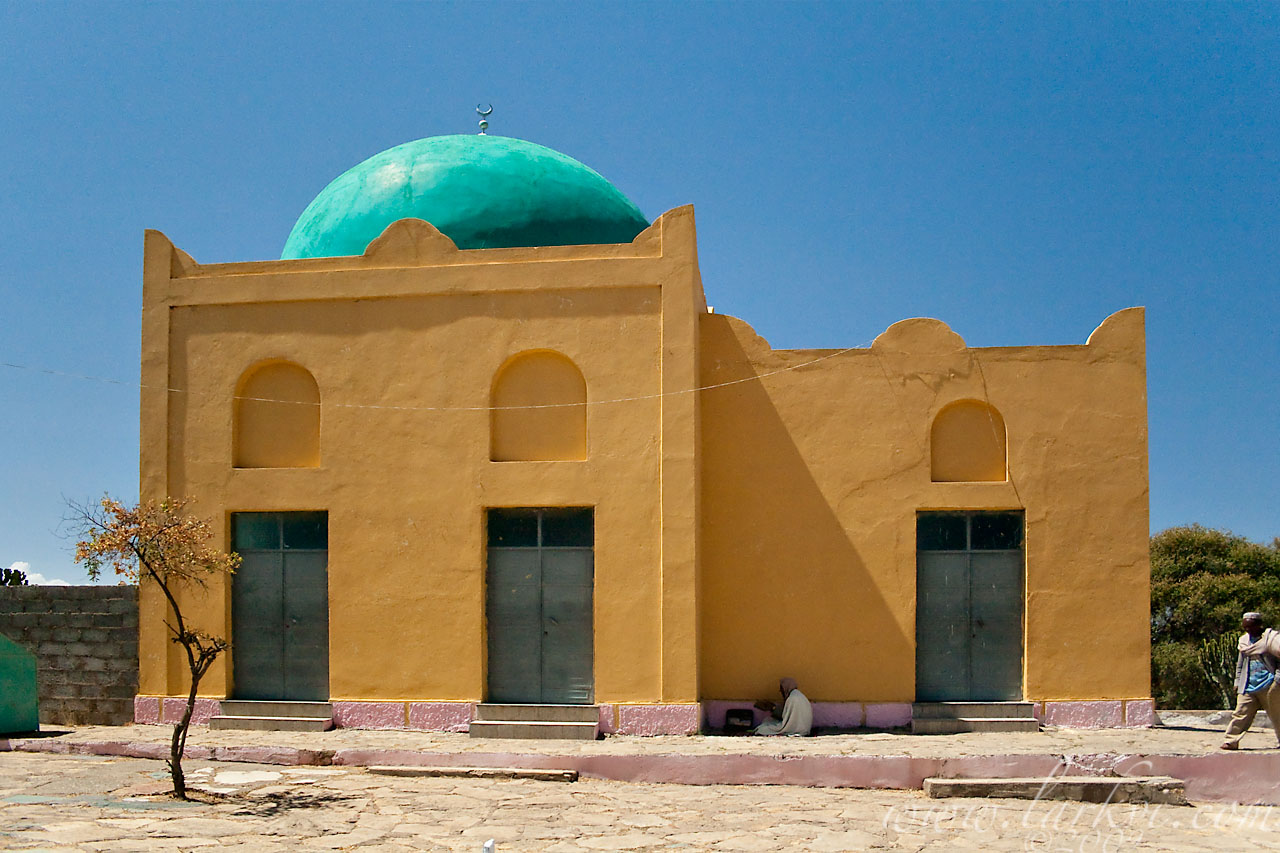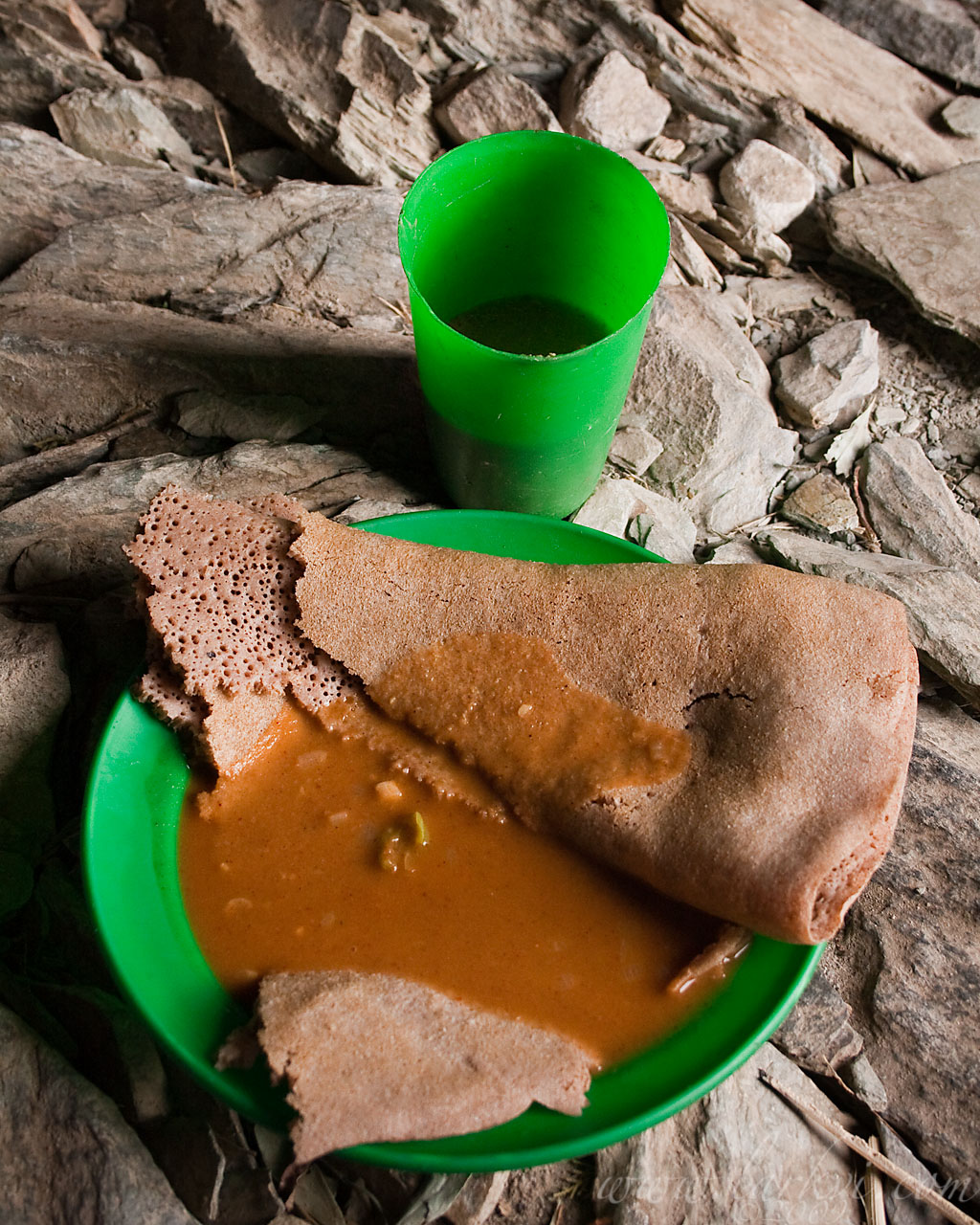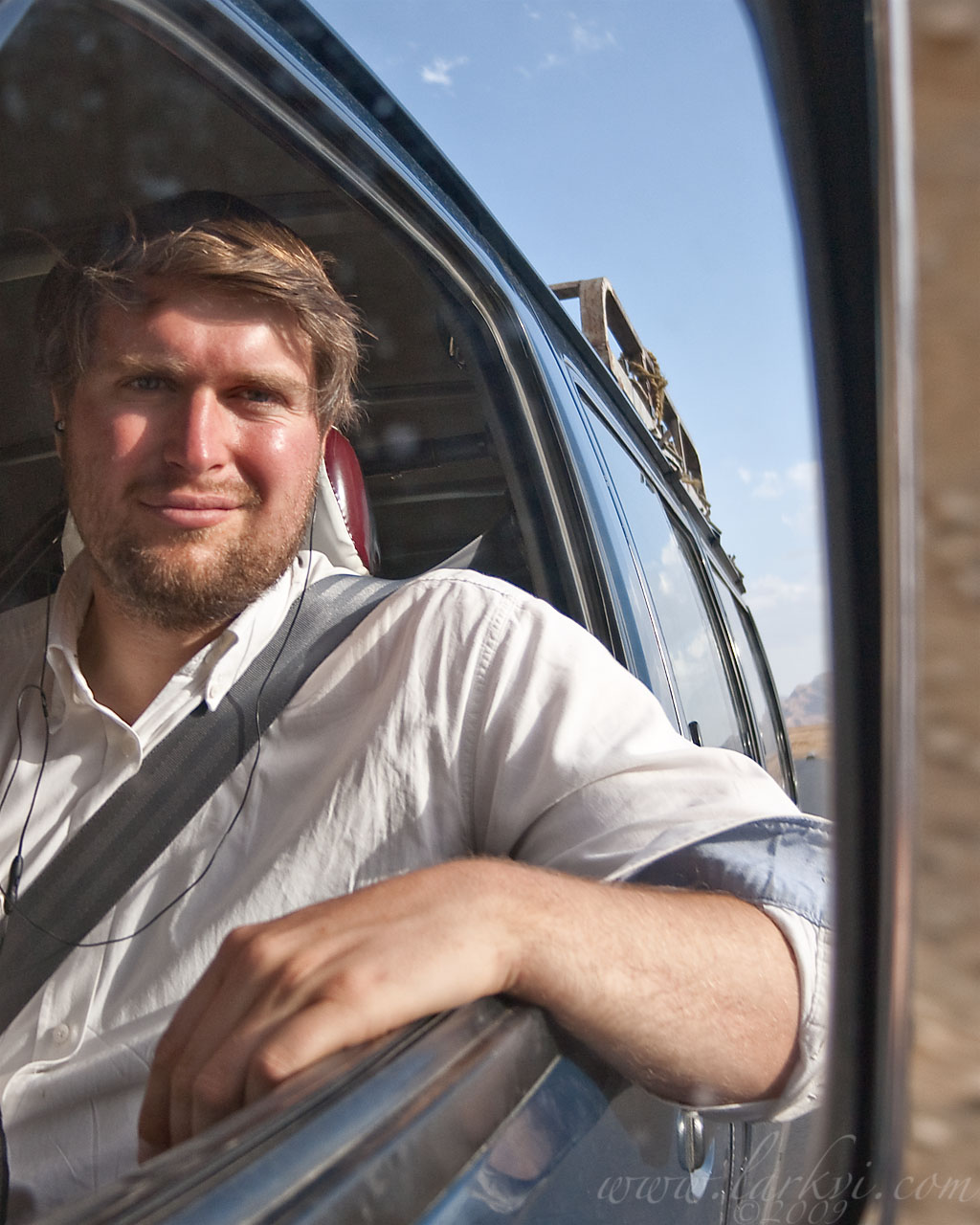
The mosque in Negash, by tradition burial site of several followers of Mohammed of the 116 (including his daughter and two of his wives-to-be) who, during his lifetime, fled to the Ethiopian kingdom to escape persecution in Mecca. They were received and sheltered by Negus Asihima** of Ethiopia, who was friendly with Mohammed during his lifetime. This hospitality is the basis for the Hadith*** exempting Ethiopia from Djihad,**** ‘so long as [the Ethiopians] leave [Moslems] alone.’ The mosque is also known as the ‘Tomb of Seid Ahmed al Negash,’ after the king, who allegedly converted to Islam and was buried there.***** Ethiopian Moslems consider Negash the most important site of worship after Mecca, though it seems to be little-regarded by those outside the country. The current mosque may be a medieval construction, built on the site of a 7th-century original, but the head of the local Heritage Preservation department has expressed doubts regarding the authenticity of the 7th-century construction, since it is unlikely that Christian Ethiopia would allow a mosque to be built over their (Christian) king’s grave and in light of the miniscule presence of Moslems in the area.
This photo has been corrected for perspective distortion.
* Ethiopian word for king. The name of the village, Negash, is from the Arabic form, Nejashi.
** Accounts of the name vary.
*** A report of a saying of the Prophet, the second level of Islamic tradition informing law, after the Qu’ran.
**** Djihad is the only form of warfare permissible under Islamic law; when the conditions are met, there is a religious obligation to carry out that war. Ethiopia, though part of the ‘Land of War’ (non-Moslem lands which are obliged to be converted, preferably by peaceful means, but, failing that, by conquest–as opposed to the ‘Land of Islam,’ where Islamic governments and established Islamic religion hold sway) is an (intermittent) exception.
***** The king was a Christian monarch and likely buried in Wukro, 10km away. Only later Moslem accounts claim that the Negus converted to Islam and was deposed for it. While certainly false, such reports have formed the basis for declaration of Djihad against the Ethiopians, since religious persecution (of Moslems–others do not count) is always cause for the waging of Djihad. Acts of past (Ethiopian Orthodox) and current (allied with the same) governments could similarly be seen as persecution by those looking for a justification for war, as Somalia’s Islamic Courts Union found (incidentally, the U. S. Dept. of State agrees–regarding persecution, not the war).




